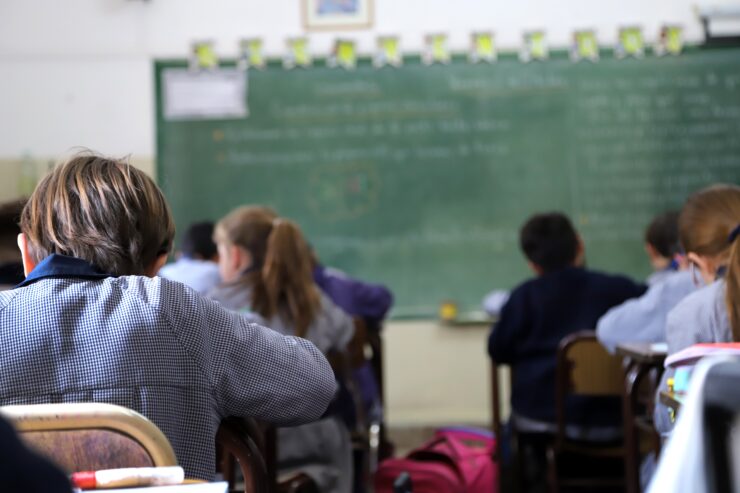Reducing children’s school-related stress
Can bringing neurobiology and educational research together help children with difficult lives outside the classroom?

When Madeline Harms encountered research showing how children from low-income families are disadvantaged, both cognitively and socially, she wanted to see more focus on solutions. Systematic research focusing on realistic ways to help these kids has not been a major focus in the field. And too little attention has been paid to children’s strengths and resilience despite difficult circumstances. Madeline tells Annie Brookman-Byrne about her efforts to connect neurobiology and educational research in the search for solutions to reduce inequality.
Annie Brookman-Byrne: What is neurobiology, and what inspired you to connect it with education research?
Madeline Harms: Neurobiology is the study of how the nervous system works. I became familiar with the neurobiology of stress through my research, but noticed a disconnect between research into the neurobiology of stress and research in education. Neurobiologists tended to focus on basic science without clear policy implications, while educational research focused on practical solutions, but often ignored or oversimplified neurobiological factors. This separation is common in academia, but my colleague Sherona Garrett-Ruffin and I thought we could integrate these two fields, which play crucial roles in reducing achievement inequality.
“It is clear that chronic stress can upset kids’ threat- and reward-detection systems.”
ABB: What did you discover as you were seeking to bring these fields together?
MH: We examined the work of many other researchers in these two fields. On the neurobiology side, it is clear that chronic stress can upset kids’ threat- and reward-detection systems. This, in turn, can affect classroom behavior and academic achievement.
On the education side, lots of studies focus on social-emotional learning, a term that refers to the collective processes involved in acquiring the skills needed to support healthy relationships and development. Many school districts have implemented interventions designed to help kids in these areas, which can be especially beneficial for those who have difficult lives outside the classroom. This type of intervention is designed to help reduce children’s perceived threat at school and motivate them to learn. But it involves several different components, and there is considerable variation in how these components are implemented in classrooms and schools. So while there is promising evidence that social-emotional learning can help reduce achievement inequality, we don’t yet know which aspects are most important or exactly how this works.
In addition, there is only limited research on how various teaching practices may interact with individual students’ ability to manage stress. We need much more interdisciplinary research on this topic, with input from psychologists, neuroscientists, and educational researchers.
ABB: What would improve outcomes for children in poverty?
MH: First of all, everyone needs to work together. We need government policies, such as the expanded Child Tax Credit in the US, that help parents financially. We also need state and local governments to provide schools with the resources they need to effectively implement programs like those designed to promote social-emotional learning. At the personal level, communication between parents and teachers is important, and setting up systems that encourage such dialogue will help economically disadvantaged kids succeed at school.
ABB: As a teacher yourself, has working on these topics changed how you teach?
MH: It was really interesting to dive into this research – especially the educational side, which I was not as familiar with. I teach college students, primarily undergraduates, and this project has made me more aware of the difficulties that these young people may have encountered in the past or be going through now – especially given the events of the past few years, including the COVID-19 pandemic and political upheaval.
“All students, whether they are at the undergraduate or graduate level or younger, need a safe and supportive learning environment.”
That awareness has motivated me to emphasize a safe classroom environment where everyone has a voice and can say what’s on their mind. That’s just as important in a statistics and research-methods class as it is in a class on racism and child development, both of which are courses I teach. All students, whether they are at the undergraduate or graduate level or younger, need a safe and supportive learning environment.
Footnotes
Madeline Harms is originally from Topeka, Kansas, in the US. She graduated from Wellesley College in 2008 with a major in psychology. Madeline completed her PhD in developmental psychology at the University of Minnesota’s Institute of Child Development in 2015. She then worked at the University of Wisconsin–Madison as a postdoctoral fellow conducting research on early-life stress and cognition. Madeline is now an assistant professor at the University of Minnesota Duluth, where she conducts research with undergraduate and graduate students on the effects of early life experiences on cognitive and emotional development during adolescence and beyond.
Madeline Harms contributed to a special collection on understanding and addressing inequality in education in the journal npj Science of Learning. This interview is part of a series dedicated to sharing practical takeaways and personal insights from authors.
The interview has been edited for clarity.
One comment
Comments are closed.



I really appreciated this conversation. It’s so eye-opening to see how stress impacts kids’ ability to learn, especially for those with difficult home lives. Madeline Harms does a great job of showing how bringing neurobiology and education together could make a real difference. It’s not just about teaching kids the basics it’s about creating a supportive environment that helps them feel safe and ready to learn. This kind of approach could really help close the gap for kids in poverty.